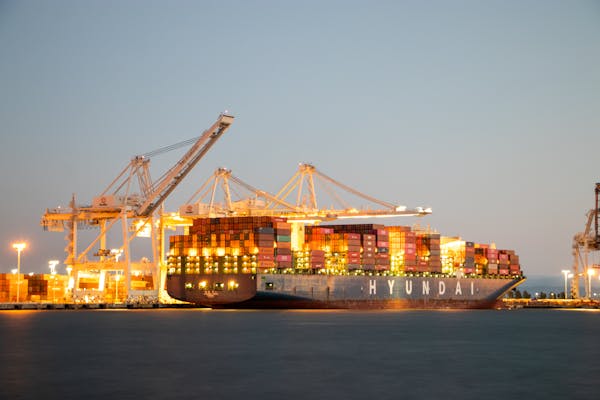Shipping Robotics from Guangzhou/Shenzhen to Galway Port, Ireland: 20FT/40FT FCL & LCL Sea Freight Solutions
Shipping Options: FCL and LCL
Full Container Load (FCL)
If you have a large shipment, Full Container Load (FCL) is often the most efficient and cost-effective choice. With FCL, your cargo occupies the entire container, which minimizes the risk of damage and ensures faster shipping. For robotics equipment, a 20FT or 40FT container is typically used, depending on the volume and size of the robots.
- 20FT FCL: Ideal for smaller shipments or when you have only a few robots to ship.
- 40FT FCL: Better suited for larger shipments, accommodating more robots or other heavy machinery.
Under the CIF (Cost, Insurance, and Freight) shipping term, the seller is responsible for the cost of the goods, shipping to the port of Galway, and insurance coverage until the goods arrive. After the goods arrive, the buyer will handle any port charges, customs clearance, and final delivery to the destination.
Less-than-Container Load (LCL)
For smaller shipments, where you don’t require an entire container, Less-than-Container Load (LCL) is a more flexible option. In LCL shipping, your goods share a container with other cargo, and the cost is divided based on the space your goods occupy in the container. Although this option may take slightly longer due to consolidation and deconsolidation at various ports, it offers cost savings for smaller shipments.
The approximate sea transit time from China to Galway Port for both FCL and LCL shipping is around 40 days, depending on weather conditions and any potential delays at the port.

Packaging of Robotics for International Shipping
When shipping robotics or other delicate machinery, proper packaging is crucial to protect the items during transit. Here’s a look at how robots should be packaged for sea freight:
Primary Packaging
- Custom-designed crates: Robots should be packed in sturdy, wooden crates that are custom-made to fit the dimensions of the robot and prevent movement during transit.
- Shock-absorbing materials: The crates should include shock-absorbing padding such as foam or bubble wrap to cushion the robot and protect it from impacts.
- Waterproofing: Since sea freight can expose cargo to high humidity or rain, it’s essential to wrap the robot in waterproof plastic or film to prevent rust or damage from moisture.
Secondary Packaging (if needed)
- Bubble wrap and foam: Individual parts of the robot, such as sensors or delicate components, should be wrapped separately in bubble wrap or foam.
- Sealed plastic bags: For any smaller electronic parts, these should be placed in sealed plastic bags to provide an extra layer of protection against water or moisture.
Labeling and Documentation
- Clear labeling: Ensure that each package has clear and visible labeling, including handling instructions such as “Fragile,” “Keep Dry,” or “This Side Up.”
- Customs documentation: All necessary customs forms, invoices, and shipping documents should be prepared and placed in an easily accessible location for smooth clearance at the port of Galway.
Containerization
Once the robots are properly packaged, they are placed into a 20FT or 40FT container, depending on the size of the shipment. If you are shipping via LCL, your goods will be consolidated with other shipments in a shared container, while FCL shipments will have the container dedicated solely to your cargo.



